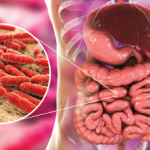The investigators then attempted to correlate their findings in mice to patients with SLE and MCTD. They found that the Th17 cells could be detected in a subset of patients with SLE as well as patients with MCTD. They also found that autoantibodies against U1-70, U1-A, and small nuclear ribonucleoprotein (Sn/RNP) were significantly increased in patients with MCTD.
The authors conclude their paper by explaining that T cell therapies such as antigen-specific tolerizing therapy from a peptide derived from U1-70 are being explored as a possible treatment for SLE. The current study describes tools (tetramer reagents) that can be used to characterize antigen-specific CD4+ T cells in lupus. A better understanding of these cells may facilitate the development of T-cell based therapeutic interventions.
Dr. Pullen is a medical writer based in the Chicago area.
Reference
1. Kattah NH, Newell EW, Jarrell JA et al. Tetramers reveal IL-17–secreting CD4+ T cells that are specific for U1-70 in lupus and mixed connective tissue disease. Proc Natl Acad Sci USA. 2015. Mar 10;112(10):3044–3049.
